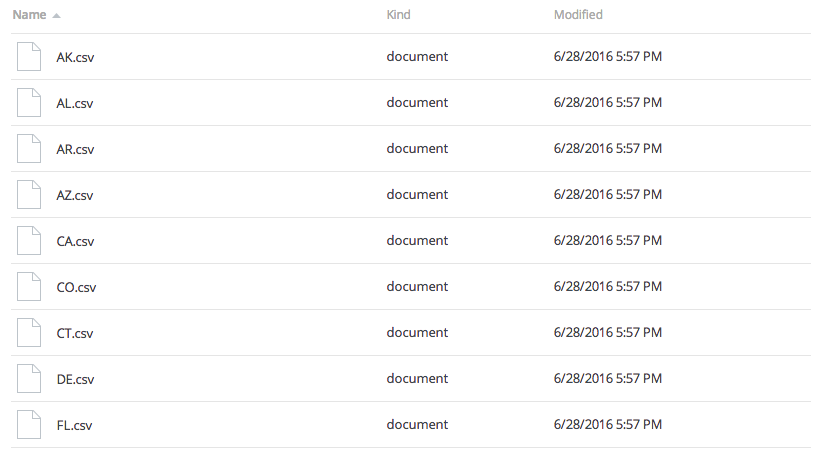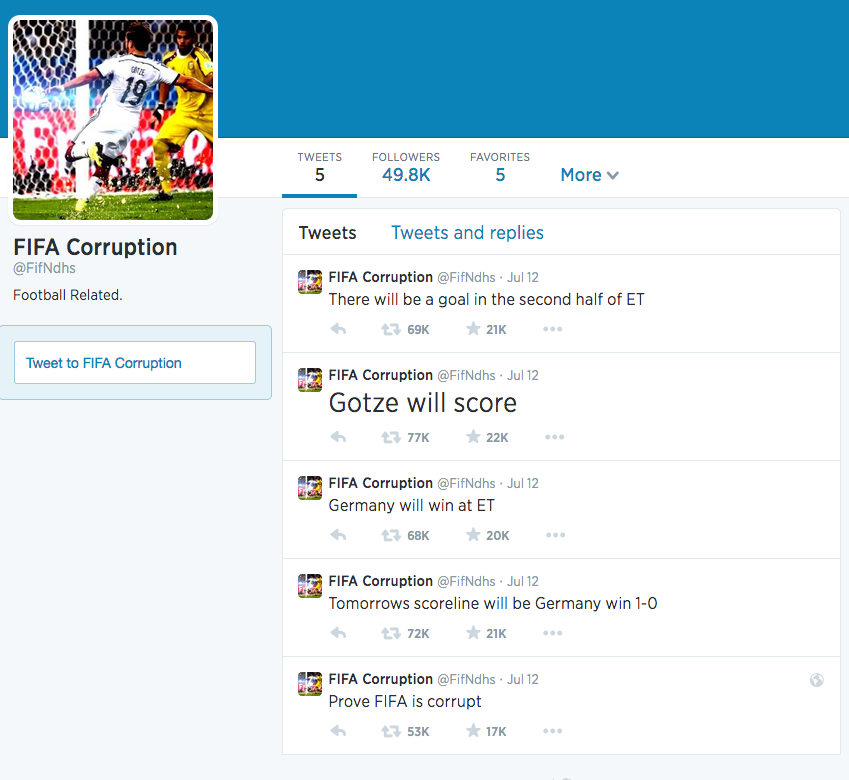On Saturday, a Twitter account appeared that perfectly predicted the outcome of the final World Cup game, down to who scored the winning goal for Germany. It was a con—and a classic one. (We’ll talk about how the con works in a moment.)
But it also felt like a missed opportunity, and immediately made me think of a much more serious con perfect for the 2016 election.
The Long Con
On November 9, 2016, the day after the presidential election, a YouTube video appears.

In the video, uploaded six months earlier, a member of Anonymous holds a leaked memo from the CEO of an electronic voting machine manufacturer. The memo states they’ve been contracted to manipulate the results of the upcoming presidential election, and clearly outlines what those results will be.
The memo goes on to say that the chosen presidential nominee will win by a small margin, and detailed state-by-state breakdowns are included in an attached spreadsheet.
To prove their claims, the Anonymous whistleblower points to Flickr and Instagram accounts with detailed scans of the memo, a Dropbox with 50 state-separated CSV files with election outcomes for each, and, finally, a Twitter account that details the electoral results for every state, the outcome of several key Senate and House races, and a final electoral tally.

Every single timestamp, across four different services, checks out—June 2016, shortly after the Democratic and Republican nominees were chosen.
And every single prediction is accurate. The Internet implodes in the biggest conspiracy theory ever.
How It’s Done
The scenario above is totally possible, easy to fake, and doesn’t require a nefarious conspiracy and Snowden-level leaker to pull off.
All it requires is a little programming knowledge, and six months of patience. Here’s how.
- Start by creating new private accounts for YouTube, Flickr, Dropbox, and Twitter.
- Create four fake memos representing four different scenarios—Republican and Democratic victories with either marginal or landslide results.
- Upload four videos to YouTube explaining the four different results, and show closeups of the respective memos you’ve created. Upload the scanned memos to Flickr and Instagram.
- Create comma-separated text files with your electoral results, two for every state. Since each state’s electoral votes are winner-take-all, list the nominee and electoral vote count in each. Upload the 100 CSV files to Dropbox. (Knowing a little code will make this much quicker.)
- Using the Twitter API, post tweets with every possible outcome. You should end up with two tweets for each state result or Congressional race. (Three if there’s a strong third-party contender.)
- Finally, for the electoral tally, write a script that uses the Twitter API to tweet every possible permutation of the final national electoral tally. With 538 electoral votes, you should end up with 1,076 tweets — from a 538-0 Republican washout to a 0-538 Democratic landslide, and every variation in between. (The variations could be easily narrowed by taking swing states into account, but why bother?)
- When all the results are in, delete every single incorrect prediction.
- Make the account public.
What’s left appears impossible: four social media accounts with six-month-old predictions, and 100% accuracy.
Selective Memory
This is a modern update to a classic confidence game—find a risky scenario with limited possibilities, bet on every single combination, and then hide your failures. The result is that you look like you’re either psychic or a goddamned genius.
Variations of this scam have been used for centuries in finance, magic, and gambling.
Mutual fund companies bring new funds to market by incubating new funds outside of the public eye for years, then actively market the strongest performers with the highest returns. Poof! You’re an overnight Warren Buffett!
Magician Derren Brown provided a perfect demonstration in the context of horse race betting, sending consecutive race predictions to 7,776 individuals divided into ever-shrinking groups, until he was left with one person who’d received five consecutive winning predictions. Convincing her to hand over her life savings was trivial.
The FIFA hoax last weekend took a conspiracy bent, alleging that the governing body overseeing the World Cup was corrupt.
The account, @FifNdhs, posted four flawless predictions of the final World Cup match between Germany and Argentina, implying that Argentinian players took a dive.

The account went viral in minutes, with each prediction being retweeted tens of thousands of times.
But the would-be leaker made a fatal mistake: they forgot to make the account private before deleting their wrong predictions. Multiple people were able to grab screenshots, instantly debunking the hoax.
This hoax plays into our biases:
- Technological.We trust that timestamps on social media can’t be manipulated.
- Cognitive. We tend to attribute credibility to those things we can see that survived a process, and not those that are less visible. See: Survivorship bias.
- Emotional. Conspiracies can confirm our existing distrust in particular entities, whether it’s FIFA or the federal government.
The beauty of this hoax is that it works with any scenario limited to less than a few thousand permutations, and on any service that lets you mark posts or accounts private. Want to prove the Oscars are rigged? Your local school board election? Apple’s stock price? Go nuts!
But for everyone else: never trust a prediction revealed after its outcome.
